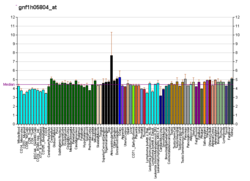
Olfactory receptor 8B2 is a protein that in humans is encoded by the OR8B2 gene.

Olfactory receptor 5H2 is a protein that in humans is encoded by the OR5H2 gene.

Olfactory receptor 51G2 is a protein that in humans is encoded by the OR51G2 gene.

Olfactory receptor 52E2 is a protein that in humans is encoded by the OR52E2 gene.

Olfactory receptor 52K2 is a protein that in humans is encoded by the OR52K2 gene.

Olfactory receptor 56A4 is a protein that in humans is encoded by the OR56A4 gene.

Olfactory receptor 2Y1 is a protein that in humans is encoded by the OR2Y1 gene.

Olfactory receptor 5M8 is a protein that in humans is encoded by the OR5M8 gene.

Olfactory receptor 52B2 is a protein that in humans is encoded by the OR52B2 gene.

Olfactory receptor 2Z1 is a protein that in humans is encoded by the OR2Z1 gene.

Olfactory receptor 5J2 is a protein that in humans is encoded by the OR5J2 gene.

Olfactory receptor 8B4 is a protein that in humans is encoded by the OR8B4 gene.

Olfactory receptor 8D2 is a protein that in humans is encoded by the OR8D2 gene.

Olfactory receptor 2V2 is a protein that in humans is encoded by the OR2V2 gene.

Olfactory receptor 8H2 is a protein that in humans is encoded by the OR8H2 gene.

Olfactory receptor 11G2 is a protein that in humans is encoded by the OR11G2 gene.

Olfactory receptor 5AK2 is a protein that in humans is encoded by the OR5AK2 gene.

Olfactory receptor 10K2 is a protein that in humans is encoded by the OR10K2 gene.

Olfactory receptor 2AK2 is a protein that in humans is encoded by the OR2AK2 gene.

Olfactory receptor 5K2 is a protein that in humans is encoded by the OR5K2 gene.








